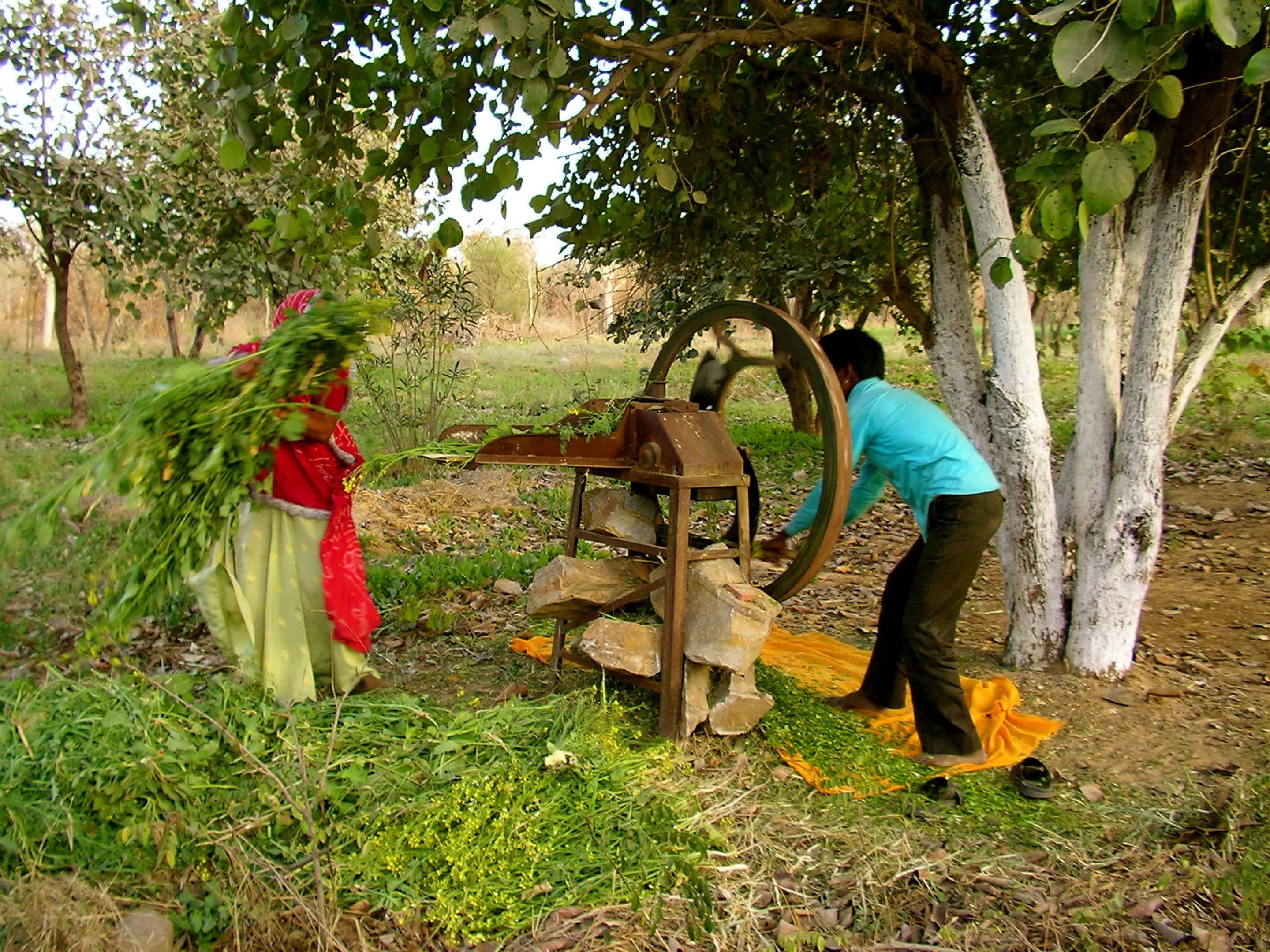Indian villages were never totally isolated. They paid taxes to rulers and chieftains, so they were always part of political system. And since there were constant wars their resources were also not exempt from looting and unplanned attacks by armies and robber bands.
The External exigencies also had their impact. The US civil war in 1550, for instance forced textile factories in England to depend on cotton farmers in Madhya Pradesh and these farmers suddenly experienced much prosperity they did not know what to do with it.
ADVERTISEMENTS:
They began to do things like decorating their bullocks’ carts with silver. It also prompted them to cultivate other cash crops like indigo and tobacco.
With the world wars and the advent of trains, buses and bicycles, villagers were further drawn into wider setup. Of course, it was never adequate or satisfactory but they became part of the network. Migration for better jobs and wages has in fact become an integral part of rural life during the last four decades.
There is seasonal migration from the more isolated villages in Bihar, Orissa and Uttar Pradesh during the harvesting season and also from dry to fertile areas.
A familiar sight in Punjab is that of landowners or their agents waiting for trains from the states to pick up labour who are herded into trucks and taken away. They get higher wages than they would at home.
ADVERTISEMENTS:
The reach of urban influences through radio and television has been significant. Rich farmers had been enthused into experimenting with gobar gas and solar energy and investing in to two wheelers and marutis.
The old system of gram payment is dying out. Contractual labour means cash payments so old relationship are fading out as are old professions. Potters and barbers have given way to plastics, cooking oil sachets and shaving creams.
The green revolution beginning with the cultivation of hybrid wheat in Punjab in the late 60’s is significant. Wheat production went up from 50 million tones to 200 millions tones.
More important was the inputs farmers got in terms of water, fertilizers, seeds and the advice of agricultural scientists to grow other crops like inferior cereals, cotton, tobacco and vegetables. This has enabled big farmers to make a great deal of money, in fact they need to be taxed.
ADVERTISEMENTS:
But the small farmers continue to suffer. Traditional practices and knowledge have become outdated and they have no access to bank credits, driving many of them to suicide even in Punjab, the administration and the bureaucracy must ensure that poor farmers have access to crop insurance, easy credit and extension services. More important, officials must treat them properly.
Yes our villages are dying with more and more people becoming educated and literate the demand for white and brown collard jobs are going up. And they in turn become models. Yes the people are no longer submissive and there is feeling of self worth and dignity.
They can’t be pushed around. So we have to develop a style for dealing with people. Failing to do so could result in clashes in the more progressive parts of the country. Not a blood revolution but a bleeding revolution.
This is already evident in various parts of the country where poorer sectors of society are being organized into a Maoist and Naxalities. This will only increase. It is a process that calls for radical solutions that will spare the lower class from ill-treatment from the upper class.
Perhaps the answer lies in destroying and rebuilding our villages where wards and streets are not based on caste. There are more than 60,000 villages. Many have population of less than 500. We should rebuild them so the caste is not the criteria. The upper castes could even be given incentives for staying close to the lower caste.
Our population is also growing but we must envisage a situation written it will decline and become static. This will happen when we fight poverty by providing education, health and sanitation and encourage the empowerment of villages.
Commercial crops, horticulture, vineyards, floriculture and other labour intensive crops should be encouraged as also the white revolution and greening of land.
Starting the next five years we should restart rebuilding villages in every taluks and district. Panchayat Raj must be encouraged and villages should be made responsible for bringing about changes.
In 1981, 24.5 per cent of population was urban and soon it may rise to 30% but the chances of villages giving way to urban landscape are remote.

